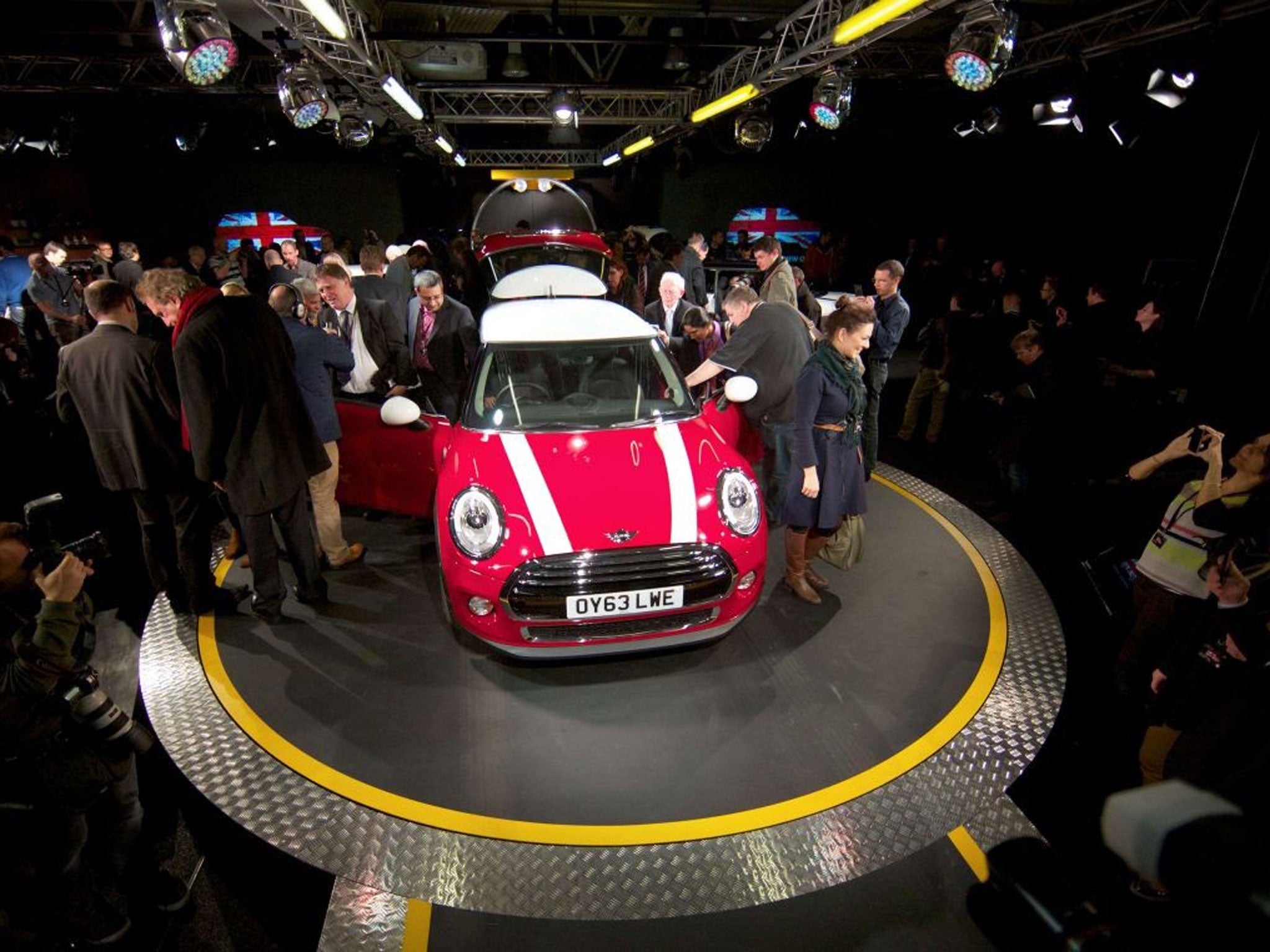Bigger, better – British? BMW takes on a classic as latest incarnation of Mini is unveiled
Sean O’Grady charts its ageless appeal – and compares the new model to its illustrious (but less profitable) predecessors

The Mini was always a paradoxical little car. When it was originally, originally launched, in 1959, its then makers, the British Motor Corporation (RIP), had in mind a car for the masses – cheap, economical and surprisingly spacious.
A few years before Doctor Who’s Tardis was invented, this was a real-world machine that was much bigger on the inside than it seemed on the outside. To achieve this, the car’s genius designer, Alec Issigonis, turned the engine through 90 degrees to make for a shorter bonnet and had the front wheels drive it (removing the need for a transmission). A miracle of engineering, and, as has been well noted, a package that was copied by all major car-makers around the world. By the late 1960s, Issigonis’s brilliant sketches were being compared to those of da Vinci.
Socially, it transformed lives. Here was a “proper” car that could take you on holiday, even abroad, as readily as to the shops. It promoted mobility; it was fun to drive; it liberated the young from parental supervision, shall we say; in The Italian Job and the Monte Carlo rally it boosted national pride. I ran one for 13 years and never tired of it. Driving in traffic, finding the gaps and exploiting them, turned a bore into a sport. Like its bigger brother, the Austin/Morris 1100, it enhanced the national standard of living. It was “our” version of motoring for all, comparable to the Model T Ford and the VW Beetle.
Commercially, it was a disaster. When the cost-controllers at Ford took one apart, they could not understand how BMC made money on it. “Mini cars make mini profits,” they concluded, correctly. And because the 5 million Minis produced made probably only a few hundred thousand pounds in profits, the marque was never invested in properly, and was eventually overtaken by rivals with fresher takes on the theme – especially the hatchback. There were many reasons for the failure of BMC/British Leyland/MG Rover, but the lack of profitability in their best-selling product was a big one.
Enter BMW, which ditched most of the Rover Group it bought in the 1990s but kept the rights to the Mini name, plus the ex-Morris Motors plant at Cowley, Oxford, that had made some of them. In 2001, BMW brought out a “new” Mini that was really anything but – bigger, inefficient in its use of space and loaded with marketing-driven luxuries and fripperies where Issigonis’s original had been spartan (no radio; heater at extra cost; sliding windows only). The second version was accompanied by an even more bloated effort, a small SUV badged “Mini Countryman” (made in Austria of all places).
The latest incarnation, unveiled in Oxford yesterday, is a further development of the styling cues – big headlamps, oversized speedometer, two-tone paint, “Cooper” stripes and the like. If all that sounds unkind, it is not meant to. The old one was well past its prime by 1980, selling mostly as a curiosity, especially to Japan. The new one excels where the old one stumbled. From personal experience of both, I can say that the new Mini will al ways start in the rain, it will not break down with anything like the frequency of the old one, and will not dissolve into rust. It is faster, safer and more comfortable but still fun and charming – and returns fuel economy that approaches the originals. The performance versions are swifter than Aston Martins, Jaguars and Ferraris were in the salad days of the original “classic” Mini (and not far off today’s supercars).
The contemporary Mini, let us be clear, is a very classy, superbly built small BMW. It has none of the social mission of the original, and none of its revolutionary appeal. However, it has been a huge success, has saved car-making in the heart of England, and provided jobs that might easily have disappeared. It is exported to more places than the old one, and, I presume, is a profitable undertaking. In its own small way, it is helping to “ rebalance” the economy as everyone wants – less financial engineering and more of the real thing.
A friend told me a story the other day. Their son asked his dad what this funny little car he had spotted might be. It was “like a Mini, but much smaller”. He meant, of course, one of the originals. Because of its tendency to rust, and the fact the last one was made 13 years ago, the “classic” Mini, once part of the national street furniture like pillar boxes or red phone kiosks, is rapidly receding into history. The new car is better in almost every way. Yet, rusty, unreliable and unsafe as it was, I still miss my 1982 Austin Mini City E, and would rather have it back than a new Mini John Cooper Works GP (from £28,795). There’s my mini paradox.
Video: Celebrities attend the launch of the new Mini
Subscribe to Independent Premium to bookmark this article
Want to bookmark your favourite articles and stories to read or reference later? Start your Independent Premium subscription today.

Join our commenting forum
Join thought-provoking conversations, follow other Independent readers and see their replies